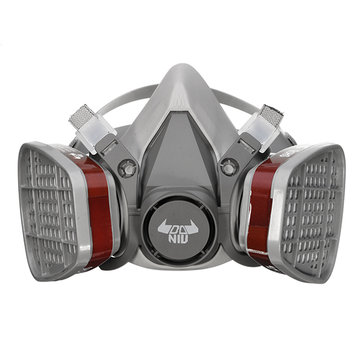There are really only 3 types of masks being discussed for pandemic preparedness. Here, we take a brief look at them and discuss the pros, cons, and uses.
Surgical or procedure style masks have become commonplace in infected areas such as china. These masks are intended to be worn by those that you want to be protected from. Have you ever gone to a clinic during flu season? Notice that it is the patients that are already sick wearing them. These masks help prevent the spread of germs by covering the face of a patient and can help by preventing the spread of germs when that patient coughs or sneezes. The DO NOT help in the prevention of contracting disease.
Use these masks if you have a patient in your home on quarantine while they recover. The patient wears them, not the caregiver.

Disposable N95 masks are the most common go to choice. These masks are intended to protect the wearer from the sick. They are not 100% effective and no, they do not filter out the virus per se. They do however reduce the risk of contraction as seen in a study performed during the MERS outbreak in 2012, which was another strain of coronavirus. These masks do have to be worn and discarded of properly though. For a reference on how to use them, please see the video below. Notice the last line of text printed on the mask…N95 masks should have the NIOSH N95 designation. If the mask does not have this printed on it somewhere, you likely have a simple dust mask that offers little to no protection.

Reusable respirators such as the one pictured above have been touted as better than disposable masks, most often because they offer a tighter, better fit reducing the risk of leaks. While this may be true, consider the process of disinfecting them. As we can clearly see, the outside of the mask has any number of crevaces and hard to reach places that can make cleaning them difficult. In addition, the filter material is located inside a cartridge that will have to be removed and disassembled to change. Handling this mask to change the filter material can expose you to the very virus you are trying to avoid.
If you are trying to avoid contracting the virus, my recommendation is to have a supply of disposable N95 masks. After the correct removal of the mask, dispose of it in a sanitary way and wash your hands after doffing. Personally, if we have to go out in an infected society, we are going to doff the masks, along with other disposable protective clothing into a garbage bag before entering the house and burning the disposed gear in a burn barrel.
If you need to care for an infected patient in your home, they should be isolated and provided with a procedure style mask, while the care giver should wear an N95 mask while in close contact. All masks should be doffed while inside the quarantine area of the home and disposed of out a window. Do not bring potentially infected masks through your home.
